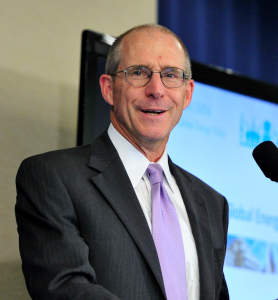 Laura Bakkensen
Laura Bakkensen
The University of Arizona
Homepage
Title: “Estimating Heterogeneous Preferences to Avoid Flood Risk and the Implications for Disaster Exposure” (Joint with Lala Ma)
Abstract: Flooding remains one of the costliest natural disasters in the United States. Key policy questions arise regarding potential heterogeneity in Marginal Willingness to Pay (MWTP) to avoid flood risk. Using house sales across Florida in 2010, we build a discrete choice, residential sorting model to estimate heterogeneous household preferences to avoid flood risk. We employ a boundary discontinuity design (BDD) to control for potentially confounding, yet unobserved, flood risk correlates. In addition, we account for pricing of National Flood Insurance Program (NFIP) premiums by incorporating household-level flood risk and subsidies, which, if ignored, may bias MWTP estimates. We find evidence of heterogeneous sorting based on home buyer race and income. We then utilize our model to estimate policy counterfactuals. Understanding heterogeneity in preferences for such risks is key to assessing the extent to which vulnerable sub-populations systematically sort into higher risk areas. In addition to providing new valuation estimates for flood risk, our results have implications for the distributional impacts of US natural disaster policies and its potential role in exacerbating inequitable flood risk exposure in the US.



 Solomon Hsiang
Solomon Hsiang
 Rohini Pande
Rohini Pande







